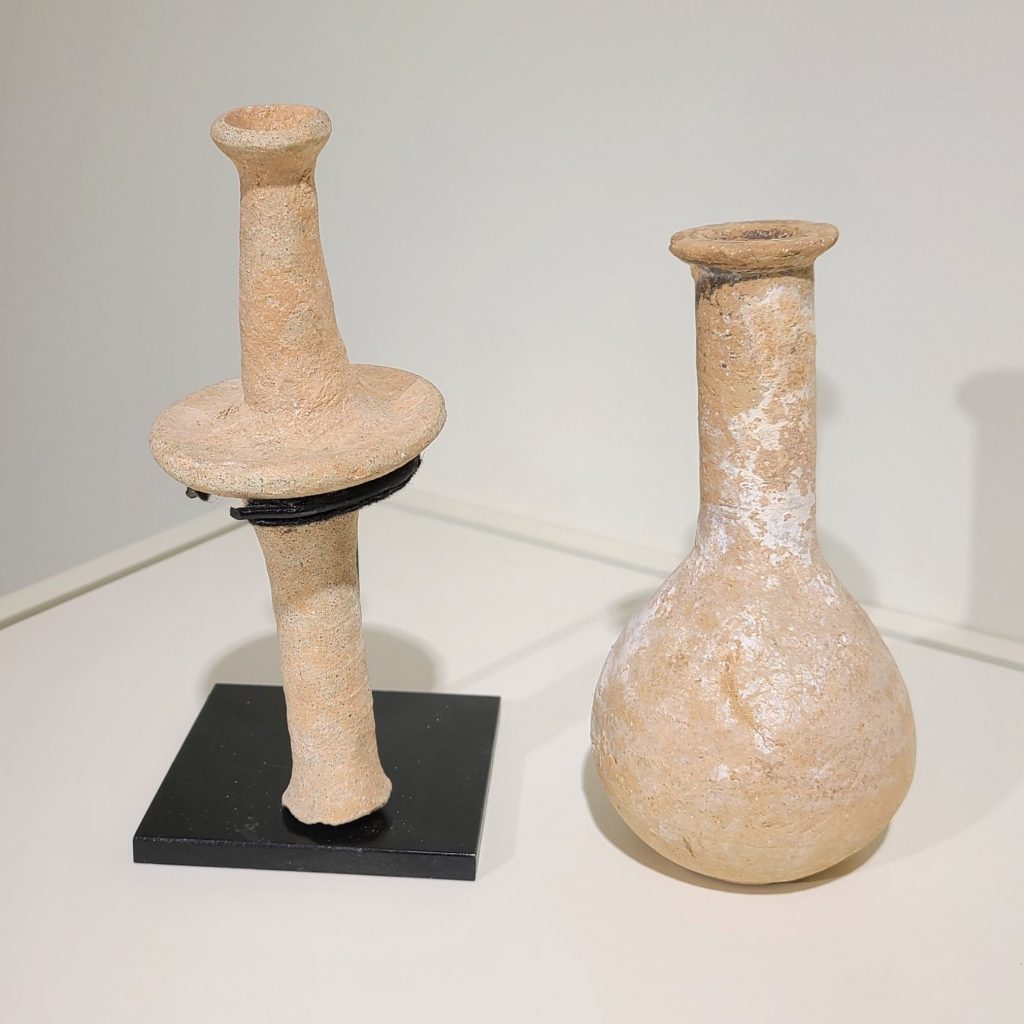The Private Lives of Pots

These objects don’t give up their secrets readily. But study them closely, and they will tell their fascinating life-stories from antiquity to the present day.
The thirty-two pots that are the focus of this exhibit were acquired by the Lam Museum in 2017. They reportedly came from the Amlash region of Iran from an academic excavation in the 1930s, but this provenance is dubious. Most artifacts that came from the Amlash region before the 1960s were illicitly excavated and sold on the antiquities market. The Lam Museum’s collection represents a variety of time periods but comprises all complete or reconstructed vessels, which would have been more saleable to a collector. They might come from multiple sites in Iran or elsewhere in the Middle East.
The only reason we can separate facts from the fictions surrounding these artifacts is because they don’t stay silent: artifacts aren’t impervious to misinterpretation, but they have their ways of resisting it. Archaeologists describe, analyze, and classify objects to make them speak and tell their true stories.

Why Do Archaeologists Study Pots?
Pottery is very durable: it breaks, but it does not disintegrate. Archaeologists working in ancient Mediterranean and Near Eastern sites often find many thousands of potsherds and, every once in a while, complete vessels.
Pottery styles change over time because of fashion or new manufacturing techniques, so different shapes of pottery can help archaeologists determine the dates of different levels in a site. If, for instance, you know that mold-made lamps only became common during the Roman period, you would not date a site with lots of mold-made lamps to before the first century BCE.
Pots can also tell us a lot about daily life among the people who used them. We can examine their shapes or use chemical analyses to determine what they once contained, and the contexts in which they were found can indicate how people used the vessels and their contents. Because unguentaria are often found in graves, for example, it is likely that perfume or scented oil played an important role in funerary rituals.
How Were They Made?
Wheel throwing – Most pottery vessels of the classical and Late Antique periods were made on a potter’s wheel, ensuring symmetry and standardized forms.
Slip – A slip is a thin, liquid clay applied over the surface of a pot for decoration or partial protection against seepage. Most of the perfume vases have a dark slip around the neck and mouth, and some of the oil lamps bear traces of a reddish slip that has now mostly worn away.
Molding – By the Roman period, lamps were generally made using two carved-stone molds. The two halves of the molded lamp were then joined together and fired.
Explore the Sections of this Exhibit Below
This exhibit was curated by WFU intern David Mulder (’20). It was on exhibit from March 1 to December 3, 2021.
